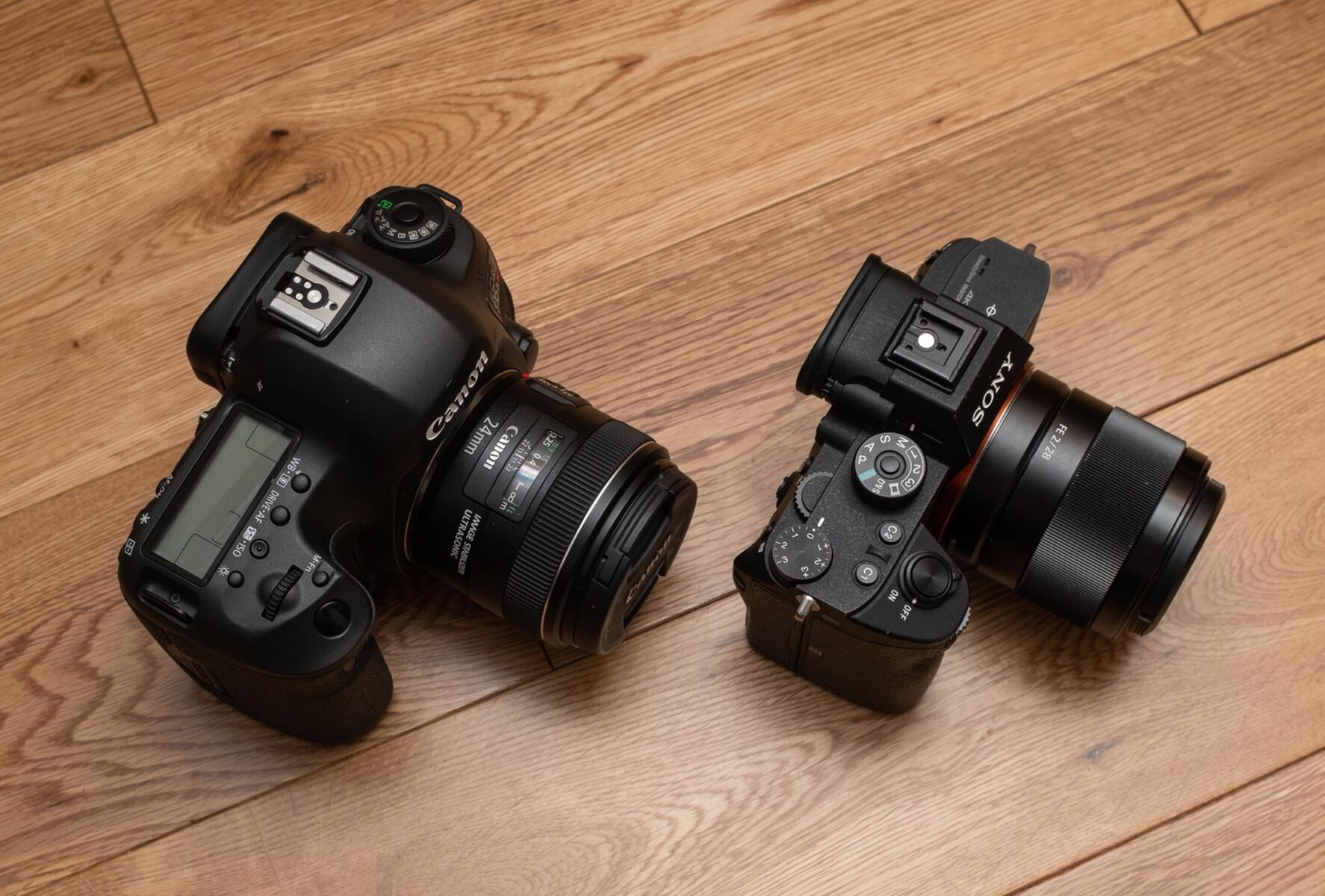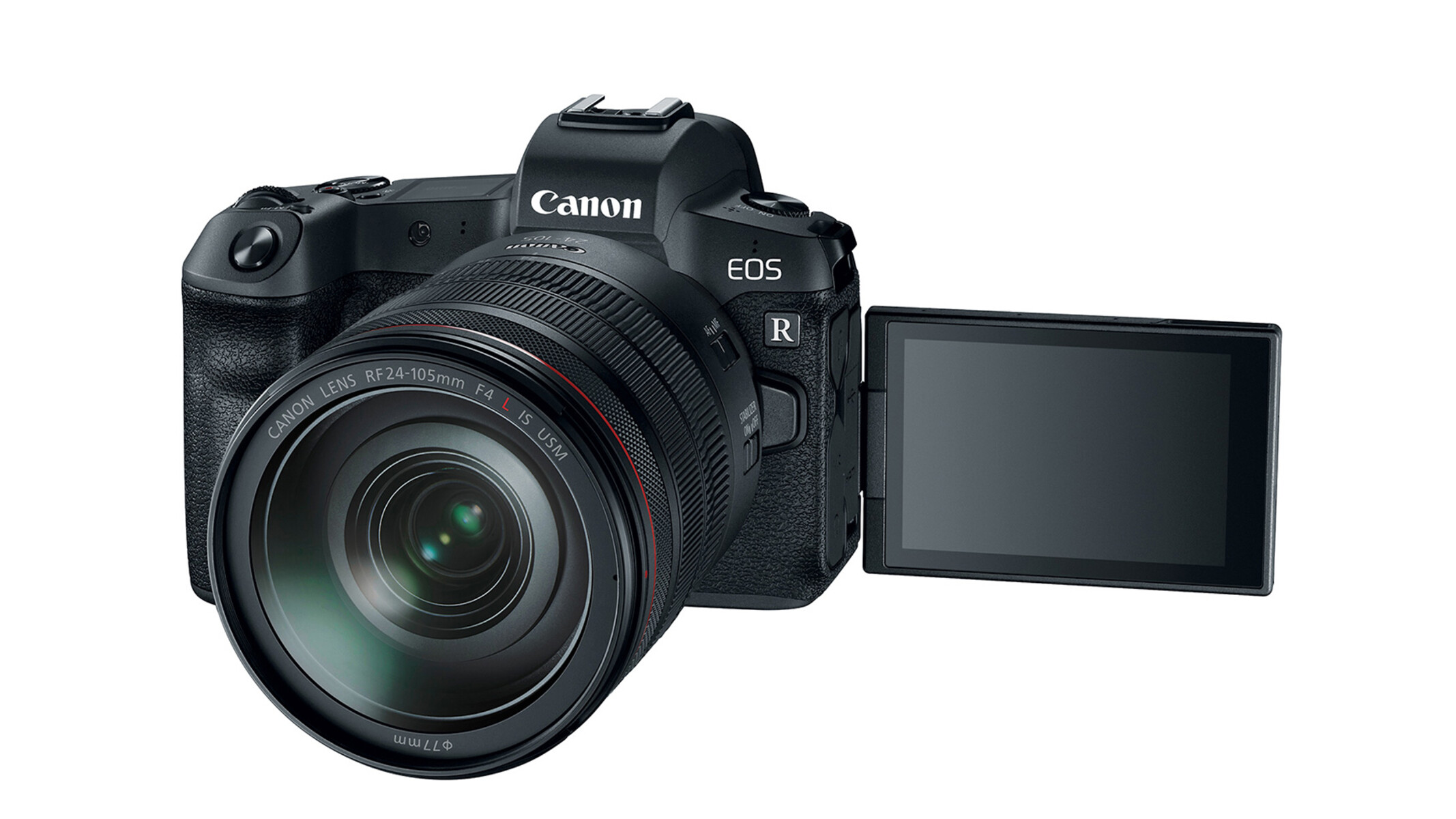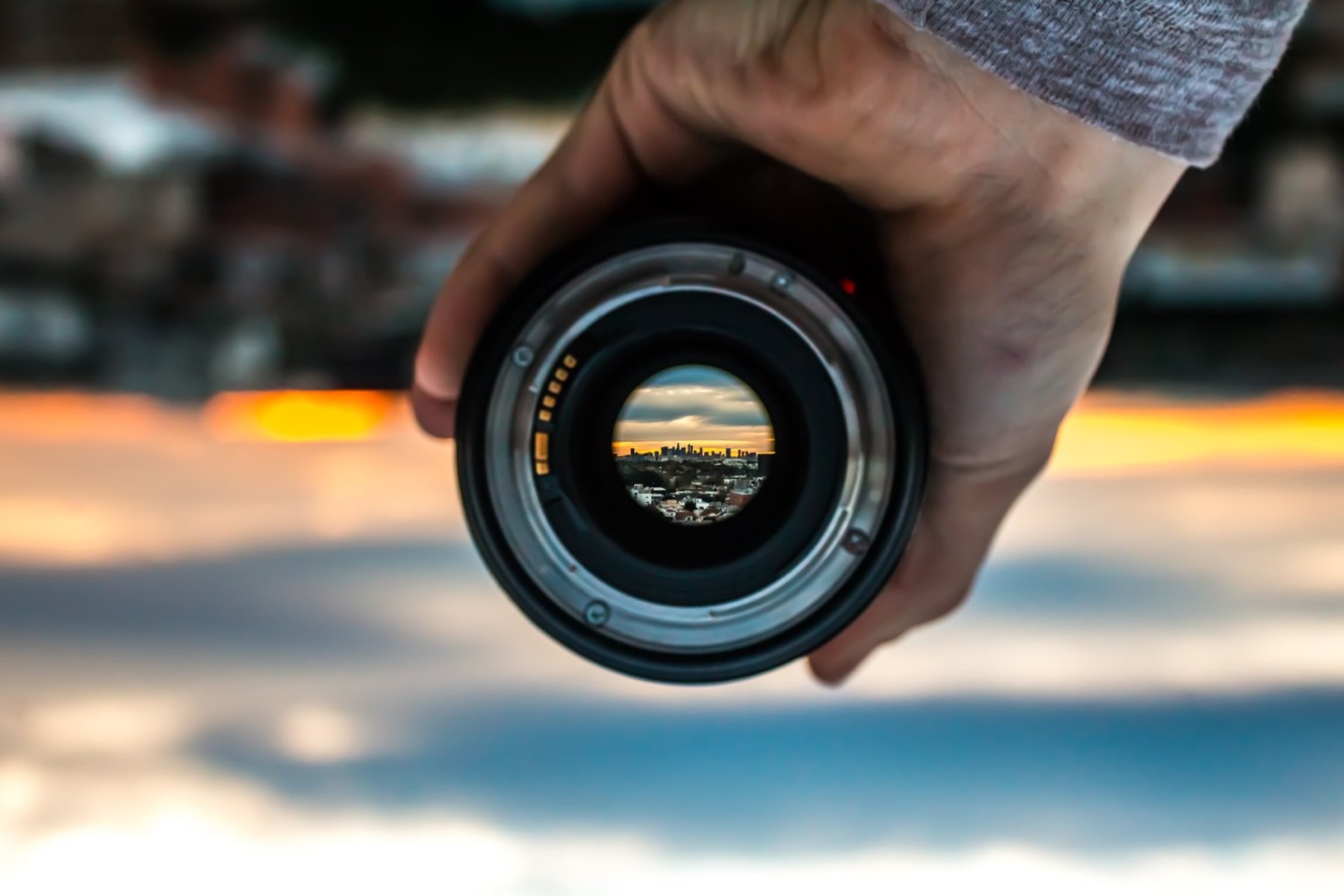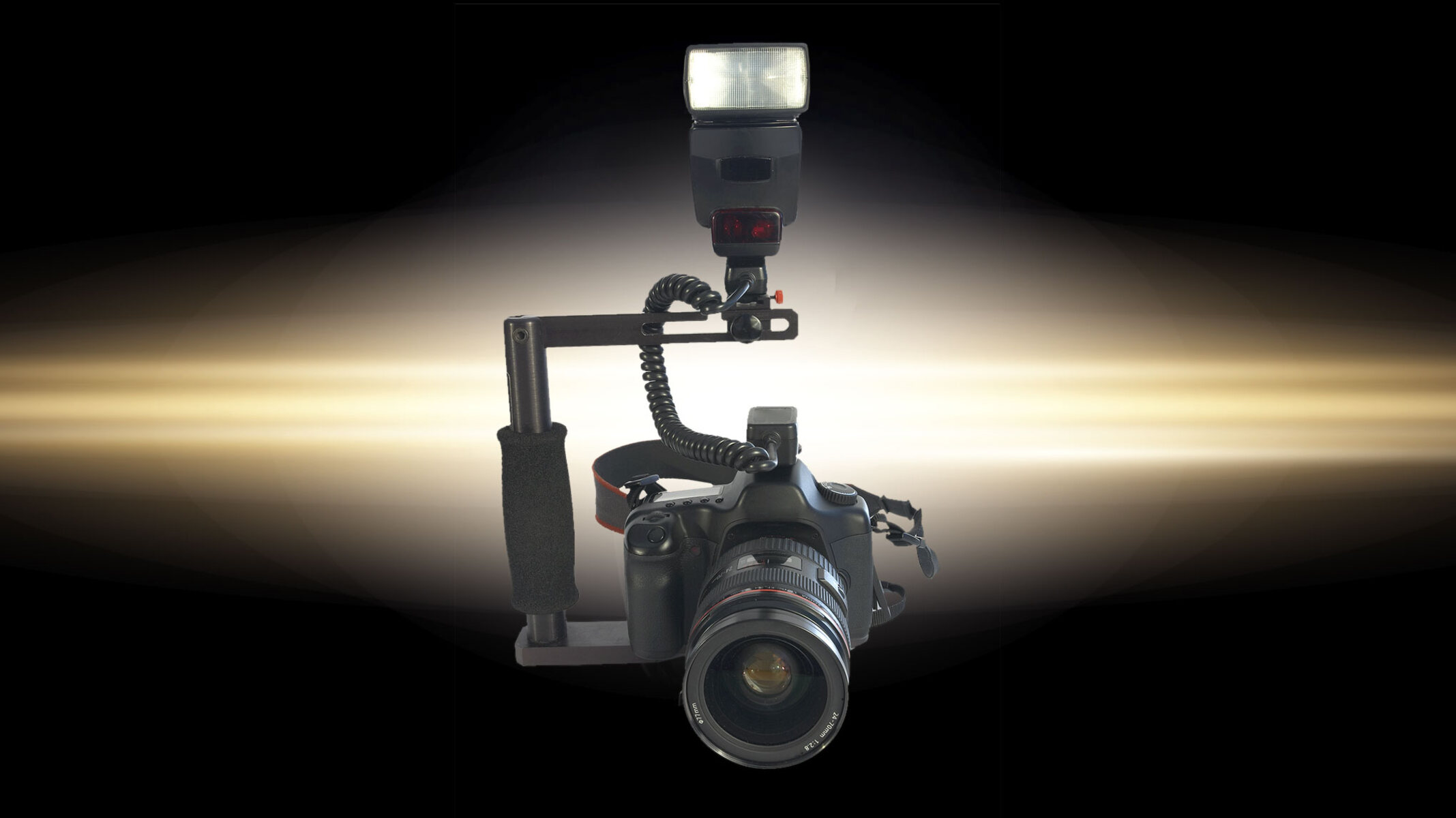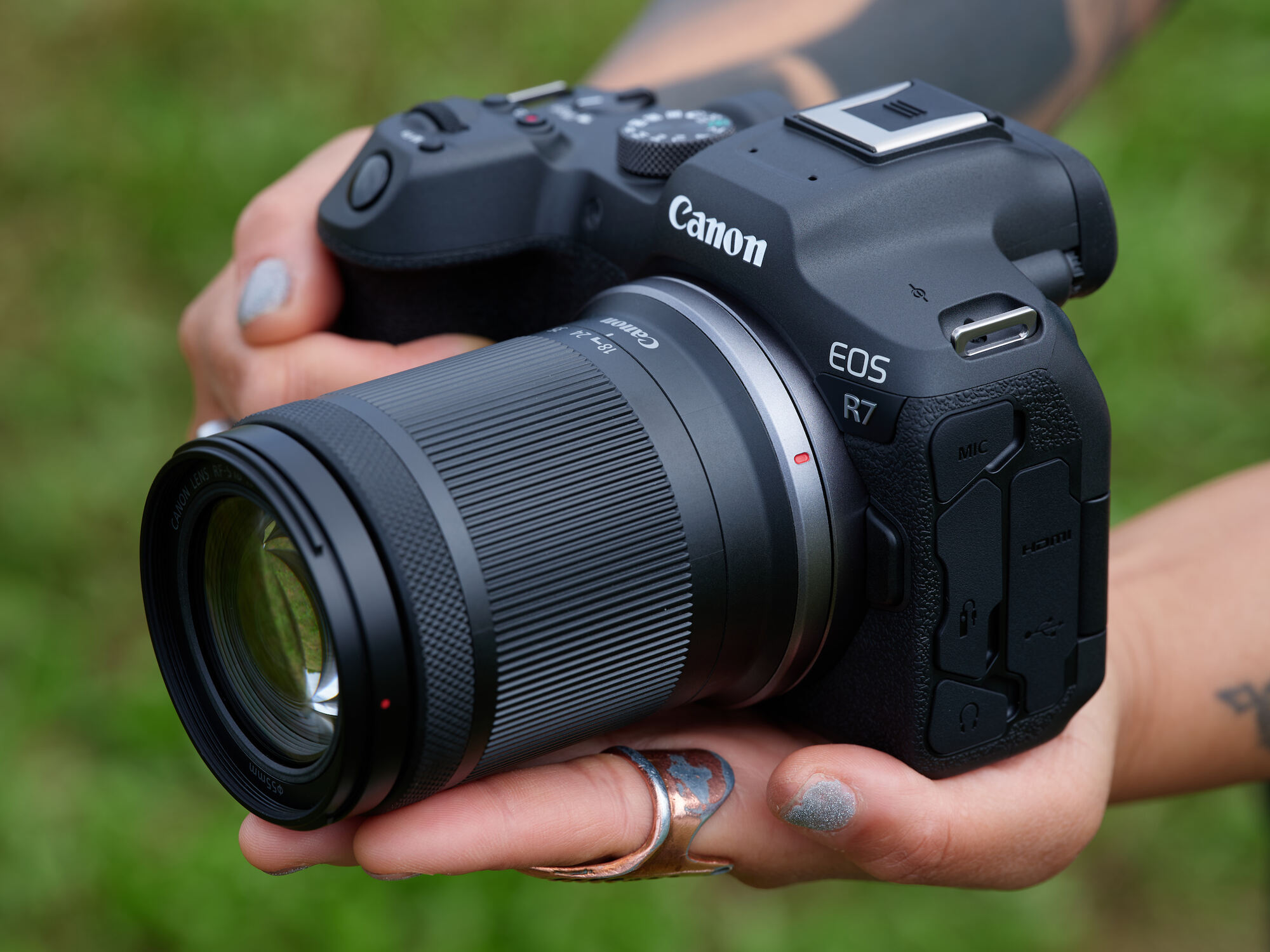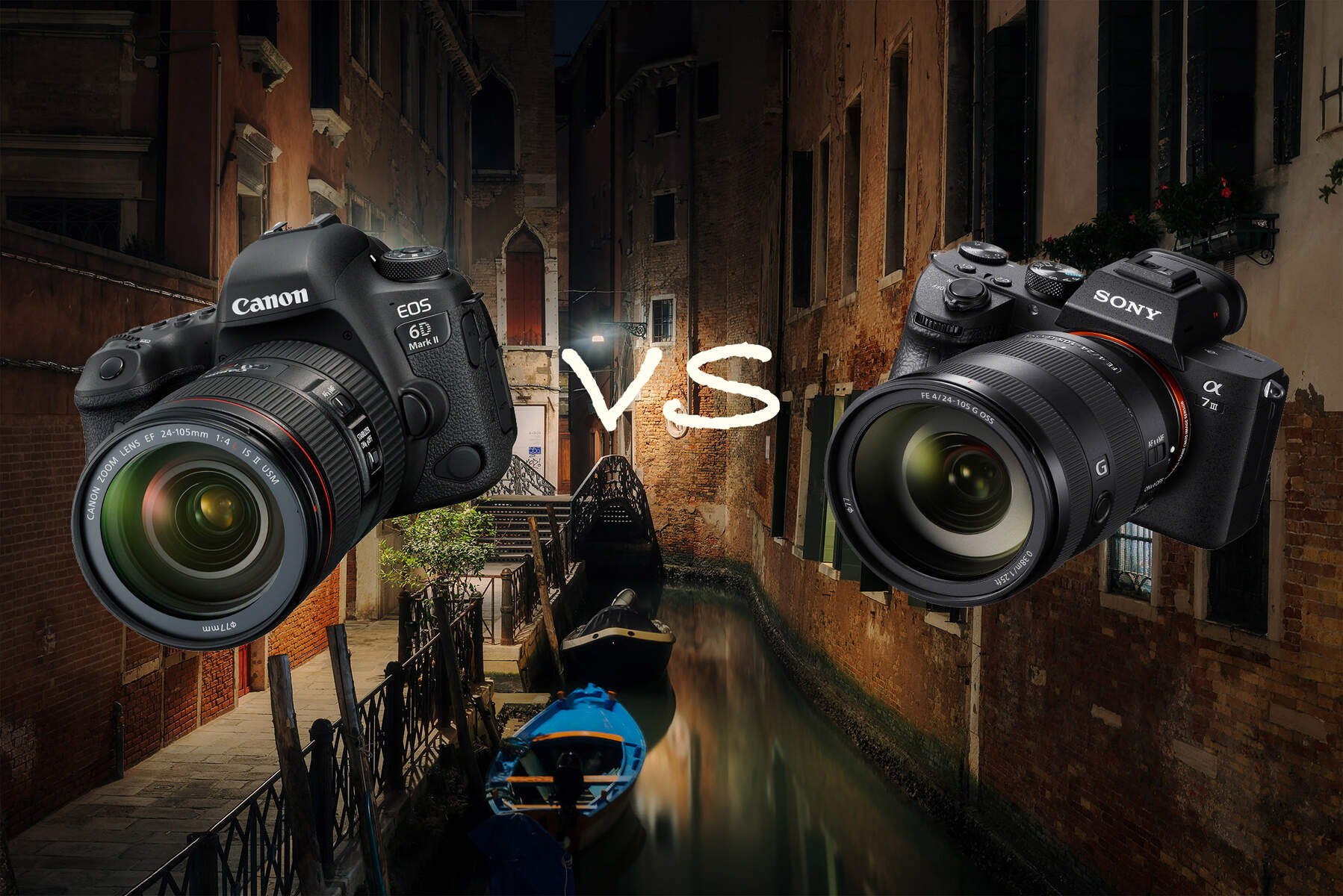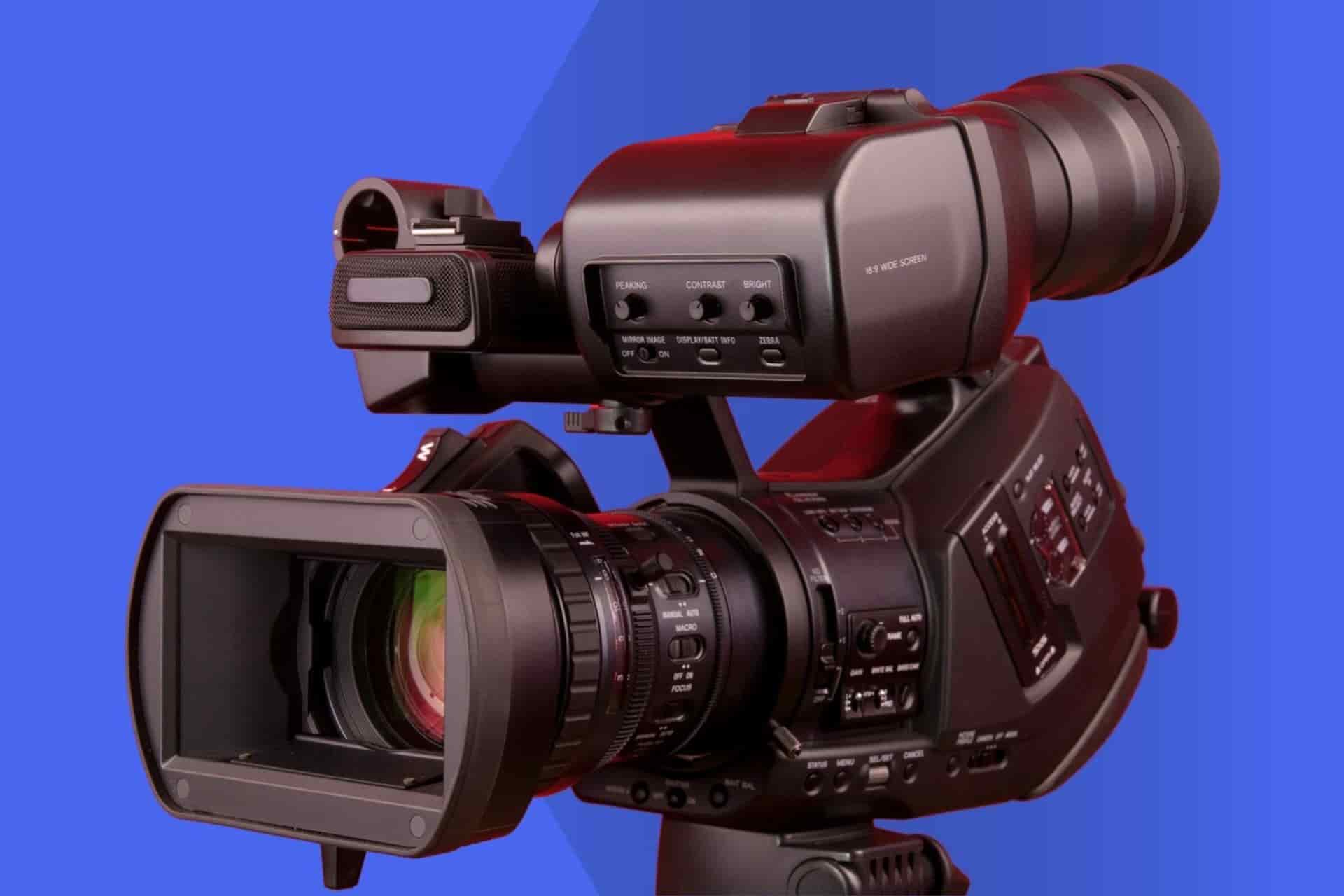Introduction
Welcome to the exciting world of videography with mirrorless cameras! Whether you're a budding filmmaker, a vlogger, or simply someone who loves capturing life's moments in stunning detail, mirrorless cameras offer a versatile and powerful tool for creating high-quality videos. In this guide, we'll delve into the essential techniques and considerations for effectively videotaping with a mirrorless camera, from selecting the right equipment to optimizing your filming setup and enhancing the overall visual and audio quality of your footage. By the end of this guide, you'll have a comprehensive understanding of how to leverage the capabilities of your mirrorless camera to produce professional-looking videos that captivate and engage your audience.
Videotaping with a mirrorless camera opens up a world of creative possibilities. These compact yet feature-rich cameras are renowned for their exceptional image quality, interchangeable lenses, and advanced video recording capabilities, making them a popular choice for videographers of all levels. Whether you're shooting cinematic masterpieces, capturing travel adventures, or creating compelling content for online platforms, the versatility and portability of mirrorless cameras make them an ideal companion for your videography endeavors.
As we embark on this journey, it's important to recognize that mastering the art of videography with a mirrorless camera is not solely about technical prowess. While understanding the settings and functions of your camera is crucial, storytelling, creativity, and attention to detail play equally vital roles in producing impactful videos. Throughout this guide, we'll explore not only the technical aspects of videography but also the artistry and vision that contribute to creating visually stunning and emotionally resonant videos.
Whether you're a newcomer to the world of videography or a seasoned enthusiast looking to elevate your video production skills, this guide is designed to equip you with the knowledge and techniques needed to harness the full potential of your mirrorless camera. So, grab your camera, unleash your creativity, and let's dive into the captivating realm of videography with mirrorless cameras!
Choosing the Right Mirrorless Camera
When venturing into the world of videography, selecting the right mirrorless camera is a crucial first step. With a myriad of options available, it’s essential to consider several key factors to ensure that your chosen camera aligns with your videography goals and preferences.
First and foremost, consider the sensor size of the mirrorless camera. Cameras with larger sensors typically deliver superior image quality and perform better in low-light conditions, allowing you to capture stunning, detailed footage even in challenging environments. Additionally, a larger sensor provides a shallower depth of field, enabling you to achieve a cinematic look with beautifully blurred backgrounds, ideal for creating visually captivating videos.
Another important consideration is the camera’s video recording capabilities. Look for a mirrorless camera that offers high-resolution video recording, such as 4K or even higher if your projects demand exceptional clarity and detail. Additionally, check for features like in-body image stabilization (IBIS) and advanced autofocus systems, which can significantly enhance the smoothness and precision of your video footage, especially when shooting handheld or capturing fast-moving subjects.
Interchangeable lens compatibility is a defining feature of mirrorless cameras, allowing you to adapt to various shooting scenarios and achieve different visual effects. Consider the availability and diversity of lenses compatible with your chosen camera system, as well as the quality and reputation of the lens lineup. Whether you require versatile zoom lenses, fast prime lenses for low-light situations, or specialized lenses for specific creative purposes, having a robust selection of lenses at your disposal can greatly expand your creative potential.
Ergonomics and handling are often overlooked but essential aspects of choosing a mirrorless camera. A comfortable and intuitive camera design can significantly impact your shooting experience, especially during extended filming sessions. Consider factors such as grip comfort, button layout, and overall ergonomics to ensure that your camera feels natural in your hands and allows for seamless operation, ultimately contributing to a more enjoyable and productive videography process.
Lastly, take into account the overall ecosystem and support available for your chosen camera system. Consider factors such as the availability of accessories, third-party support, firmware updates, and the community of users who can provide valuable insights and resources. A thriving ecosystem can enhance your overall experience with the camera and provide you with a network of resources to continually improve your videography skills.
By carefully evaluating these factors and conducting thorough research, you can select a mirrorless camera that aligns with your videography aspirations, empowering you to unleash your creativity and embark on a captivating visual storytelling journey.
Setting Up Your Mirrorless Camera for Video
Once you’ve chosen the right mirrorless camera for your videography endeavors, it’s essential to optimize its settings and configurations to achieve the best possible video quality. Properly setting up your camera not only ensures optimal performance but also allows you to unleash the full potential of your equipment, resulting in visually compelling and professional-looking videos.
Begin by familiarizing yourself with the video recording settings of your mirrorless camera. Explore the available frame rate options, resolution settings, and video codecs to understand the range of choices at your disposal. For cinematic sequences, consider utilizing higher frame rates such as 24fps or 30fps, which are commonly used in filmmaking to achieve a natural and immersive visual experience. Additionally, if your camera offers the flexibility of recording in 4K resolution, take advantage of this feature to capture stunningly detailed footage that retains exceptional clarity even when scaled down for viewing.
Adjust the white balance settings to ensure accurate color reproduction in your videos. While many mirrorless cameras offer automatic white balance modes, taking the time to manually set the white balance based on the lighting conditions can significantly enhance the overall color accuracy of your footage. Whether you’re shooting indoors under artificial lighting or outdoors in natural light, customizing the white balance settings ensures that your videos exhibit true-to-life colors and visual fidelity.
Explore the available picture profiles and color grading options to tailor the look and feel of your videos. Many mirrorless cameras provide a range of picture profiles that offer different color and contrast characteristics, allowing you to achieve a specific aesthetic for your videos. Additionally, consider shooting in a flat or log profile, which preserves a wider dynamic range and facilitates more extensive color grading in post-production, empowering you to craft a distinct visual style for your videos.
Optimize the audio settings of your mirrorless camera to capture high-quality sound that complements your video footage. If your camera features a microphone input, consider using an external microphone to capture clearer and more directional audio, minimizing ambient noise and enhancing the overall sonic experience. Adjust the audio levels and monitor the sound input to ensure that your videos feature crisp and balanced audio that elevates the impact of your visual storytelling.
Lastly, familiarize yourself with the camera’s focusing options and consider utilizing manual focus or autofocus modes based on your shooting requirements. Understanding the nuances of the autofocus system and experimenting with manual focus techniques can greatly influence the visual impact of your videos, allowing you to achieve precise and expressive focus transitions that enhance the cinematic quality of your footage.
By meticulously configuring your mirrorless camera for video, you can harness its full potential and embark on a visual storytelling journey that captivates and resonates with your audience.
Lighting and Composition Tips
Effective lighting and composition are integral elements in creating visually captivating and impactful videos with a mirrorless camera. By mastering the art of lighting and composition, you can elevate the quality of your footage, evoke specific moods, and guide the viewer’s attention to essential elements within the frame.
When it comes to lighting, natural light can be a videographer’s best friend. If possible, leverage natural light sources such as windows, open doorways, or outdoor environments to illuminate your subjects and scenes. Natural light offers a soft, flattering quality that can enhance the visual appeal of your videos, especially when capturing interviews, vlogs, or cinematic sequences. However, it’s essential to be mindful of the time of day and the direction of light to achieve the desired aesthetic and avoid harsh shadows or overexposure.
For controlled lighting setups, consider investing in a versatile lighting kit that includes softboxes, LED panels, and diffusers. These tools allow you to sculpt and manipulate light to suit your creative vision, whether you’re aiming for dramatic, high-contrast lighting or a soft, even illumination. Experiment with different lighting angles, intensities, and color temperatures to craft visually compelling scenes that convey the intended mood and atmosphere of your videos.
Composition plays a pivotal role in visually guiding the audience’s attention and conveying the narrative within your videos. Utilize the rule of thirds to create balanced and visually engaging compositions, placing key elements or subjects along the intersecting points of the imaginary grid. Additionally, consider incorporating leading lines, framing devices, and varied perspectives to add depth and visual interest to your shots, drawing the viewer deeper into the storytelling experience.
Explore different camera movements and angles to add dynamism and visual intrigue to your videos. Experiment with panning, tilting, and dolly movements to create smooth and immersive sequences that capture the viewer’s imagination. Whether you’re filming dynamic action sequences, scenic landscapes, or intimate close-ups, deliberate camera movements can enrich the visual narrative and evoke powerful emotional responses from your audience.
When framing your shots, consider the concept of negative space and utilize it purposefully to emphasize the subject and evoke a sense of visual balance and harmony. Negative space can be particularly effective in conveying emotions, creating tension, or highlighting the significance of the main subject within the frame, adding depth and nuance to your video compositions.
By mastering the interplay of lighting and composition, you can infuse your videos with visual richness, depth, and emotional resonance, creating an immersive and compelling viewing experience that resonates with your audience on a profound level.
Audio Considerations
While visual quality is paramount in videography, the importance of audio cannot be overstated. Clear, high-quality audio is essential for engaging and immersing your audience in the narrative of your videos. When capturing audio with a mirrorless camera, several considerations and techniques can significantly enhance the sonic impact of your footage.
First and foremost, consider utilizing an external microphone to capture superior audio quality. Many mirrorless cameras feature a microphone input, allowing you to connect a dedicated shotgun microphone, lavalier microphone, or external audio recorder to capture crisp, directional audio. External microphones offer improved sound isolation, reduced ambient noise, and enhanced clarity, ensuring that your videos feature professional-grade audio that complements the visual storytelling.
When selecting an external microphone, assess your specific recording needs and shooting scenarios. Shotgun microphones are ideal for capturing focused, directional audio, making them suitable for interviews, vlogs, and outdoor filming. Lavalier microphones, on the other hand, provide discreet and hands-free audio capture, making them a popular choice for on-camera presenters, documentary-style filming, and narrative-driven content. Additionally, consider investing in a high-quality windscreen or deadcat to mitigate wind noise when filming in outdoor environments, ensuring that your audio remains clear and artifact-free.
Adjust the microphone input levels on your mirrorless camera to achieve optimal audio recording levels. Aim to set the levels such that the audio signal remains clear and free from distortion, while also avoiding excessively low levels that may introduce unwanted noise during post-production amplification. Monitoring the audio levels through the camera’s built-in meters or headphones allows you to ensure consistent and balanced audio capture throughout your filming sessions.
When capturing dialogue or narration, prioritize the placement of the microphone to achieve the best possible audio fidelity. Position the microphone in close proximity to the subject’s mouth while remaining out of the frame, ensuring that the audio remains clear and intelligible. Additionally, consider the acoustics of the filming environment and implement soundproofing or acoustic treatment to minimize reverberation and unwanted echoes, resulting in cleaner and more polished audio recordings.
Post-production processing and enhancement can further elevate the audio quality of your videos. Consider utilizing audio editing software to remove background noise, equalize the frequency response, and apply subtle compression to achieve a balanced and professional audio mix. Additionally, incorporating ambient soundscapes or carefully selected music can enrich the auditory experience of your videos, immersing the audience in the intended atmosphere and emotional resonance of the visual narrative.
By prioritizing audio considerations and implementing best practices for audio capture, you can ensure that your videos resonate with clear, immersive, and emotionally compelling sound, elevating the overall impact and storytelling prowess of your videography endeavors.
Tips for Stabilizing Your Footage
Stable footage is essential for creating professional-looking videos with a mirrorless camera. Whether you’re capturing handheld sequences, dynamic movement, or cinematic shots, implementing effective stabilization techniques can significantly enhance the visual quality and overall impact of your footage. Here are valuable tips for stabilizing your video recordings and achieving smooth, steady results.
- Utilize In-Body Image Stabilization (IBIS): If your mirrorless camera is equipped with in-body image stabilization, leverage this feature to minimize camera shake and achieve smoother footage, especially when shooting handheld or in challenging conditions. IBIS compensates for small movements and vibrations, resulting in steadier video recordings without the need for additional stabilizing equipment.
- Invest in a Quality Gimbal or Stabilizer: For dynamic and fluid camera movements, consider using a gimbal or stabilizer designed for mirrorless cameras. These devices provide three-axis stabilization, allowing you to capture cinematic tracking shots, panning sequences, and stable handheld footage with remarkable precision and smoothness. Select a gimbal that is compatible with the weight and dimensions of your camera setup for optimal performance.
- Employ Tripods and Monopods for Stability: When shooting static or stationary scenes, utilizing a sturdy tripod or monopod can ensure rock-solid stability and eliminate unwanted camera movements. Tripods provide reliable support for stationary shots and time-lapse sequences, while monopods offer portability and flexibility for capturing stable footage in various environments.
- Master Handheld Shooting Techniques: When shooting handheld, practice proper hand and body positioning to minimize camera shake and achieve steadier results. Maintain a stable stance, tuck your elbows close to your body, and employ smooth, deliberate movements to capture handheld footage with enhanced stability. Additionally, consider using the camera’s built-in electronic stabilization features, if available, to further smooth out minor vibrations and movements.
- Consider Using Camera Rigging and Support Systems: Camera rigs, shoulder mounts, and support systems can provide added stability and comfort during extended filming sessions. These accessories distribute the weight of the camera setup, reduce fatigue, and allow for more controlled and stable movements, particularly when filming in dynamic or physically demanding scenarios.
Furthermore, be mindful of your movements and surroundings when capturing footage. Avoid abrupt or jerky camera motions, and be conscious of potential sources of vibration or instability, such as windy conditions or uneven terrain. By maintaining awareness of your filming environment and implementing appropriate stabilization techniques, you can consistently produce visually captivating and professional-quality videos that engage and captivate your audience.
Editing Your Video Footage
Editing is a transformative phase in the videography process, where raw footage is crafted into a compelling visual narrative. With the right techniques and tools, you can elevate the impact of your videos, enhance storytelling, and create a seamless viewing experience for your audience. Here are essential considerations and tips for effectively editing your video footage captured with a mirrorless camera.
- Organize and Select Your Footage: Begin by organizing your video clips and selecting the best takes for your project. Review the footage, identify key moments, and assemble a cohesive storyline that aligns with your creative vision. Consider the pacing, emotional beats, and visual continuity of the footage as you make your selections.
- Utilize Nonlinear Editing Software: Invest in a professional nonlinear editing (NLE) software that offers a comprehensive suite of editing tools and features. Popular NLE platforms such as Adobe Premiere Pro, Final Cut Pro, and DaVinci Resolve provide robust capabilities for editing, color grading, audio mixing, and visual effects, empowering you to achieve polished and professional results.
- Apply Color Correction and Grading: Enhance the visual aesthetics of your footage by implementing color correction and grading techniques. Adjust the exposure, contrast, color balance, and saturation to achieve a consistent and visually appealing look across your video clips. Experiment with color grading to establish a distinct mood and atmosphere that aligns with the narrative and emotional tone of your videos.
- Integrate Seamless Transitions and Effects: Incorporate smooth and seamless transitions between shots to maintain visual continuity and enhance the flow of your video. Experiment with various transition effects, such as cuts, dissolves, wipes, and creative transitions, to add visual interest and guide the viewer through the narrative. Additionally, consider using subtle visual effects and motion graphics to accentuate key moments and convey information effectively.
- Enhance Audio and Implement Sound Design: Pay meticulous attention to the audio elements of your videos during the editing process. Ensure that dialogue, music, and sound effects are balanced and synchronized effectively. Implement sound design techniques to enhance the auditory experience, such as ambient soundscapes, foley effects, and spatial audio processing, to immerse the audience in the sonic landscape of your videos.
- Optimize for Different Viewing Platforms: Consider the intended viewing platforms for your videos, whether it be online streaming, social media, or theatrical projection. Tailor the aspect ratio, resolution, and encoding settings of your videos to ensure optimal playback quality and compatibility across various devices and platforms.
Throughout the editing process, maintain a cohesive and engaging visual narrative that captivates and resonates with your audience. By leveraging the capabilities of professional editing software and implementing thoughtful editing techniques, you can transform raw footage into polished, visually stunning videos that leave a lasting impression on your viewers.









